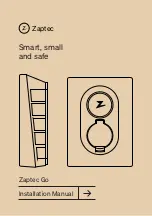
Starting & Driving
97
2
DIESEL MODELS
Never start, or leave the
engine running, in an
unventilated building - exhaust
gases are poisonous and
contain carbon monoxide,
which can cause
unconsciousness and may even
be fatal.
Starting the engine
1.
Check that the handbrake is applied and that the gear
lever is in neutral (‘P’ or ‘N’ for automatic transmission).
2.
Switch off all unnecessary electrical equipment
(including the air conditioning).
3.
Insert the key and turn the starter switch to the second
position. Wait until the glow plug warning light
extinguishes.
NOTE: Continued use of the
starter will not only discharge the
battery, but may damage the
starter motor and the catalytic
converter.
4.
Turn the key to the third position to operate the starter
motor; DO NOT press the accelerator pedal during
starting and release the key as soon as the engine is
running.
Care point: Catalytic converters
can be damaged if the wrong fuel
is used, or if an engine misfire
occurs. Before starting the
engine, you should be aware of
the precautions detailed under
‘Catalytic converter’.
If the engine stalls, you MUST turn the starter switch fully off
before turning the starter switch back to the second position.
Then wait until the glow plug warning light goes out before
attempting to restart; the engine will not start after stalling by
turning the starter switch from the second position.
In temperate climates, DO NOT operate the starter switch
for longer than 5 seconds; if the engine fails to start, switch off
and wait for 10 seconds before re-using the starter.
Precautions
•
The diesel engine must not be run above fast idle
speed until the oil pressure warning light
extinguishes. This will ensure that the engine and
turbo-charger bearings are properly lubricated
before being run at speed.
•
ALWAYS allow the engine to idle for 10 seconds
before switching off.
Summary of Contents for Seventy Five
Page 205: ......
















































